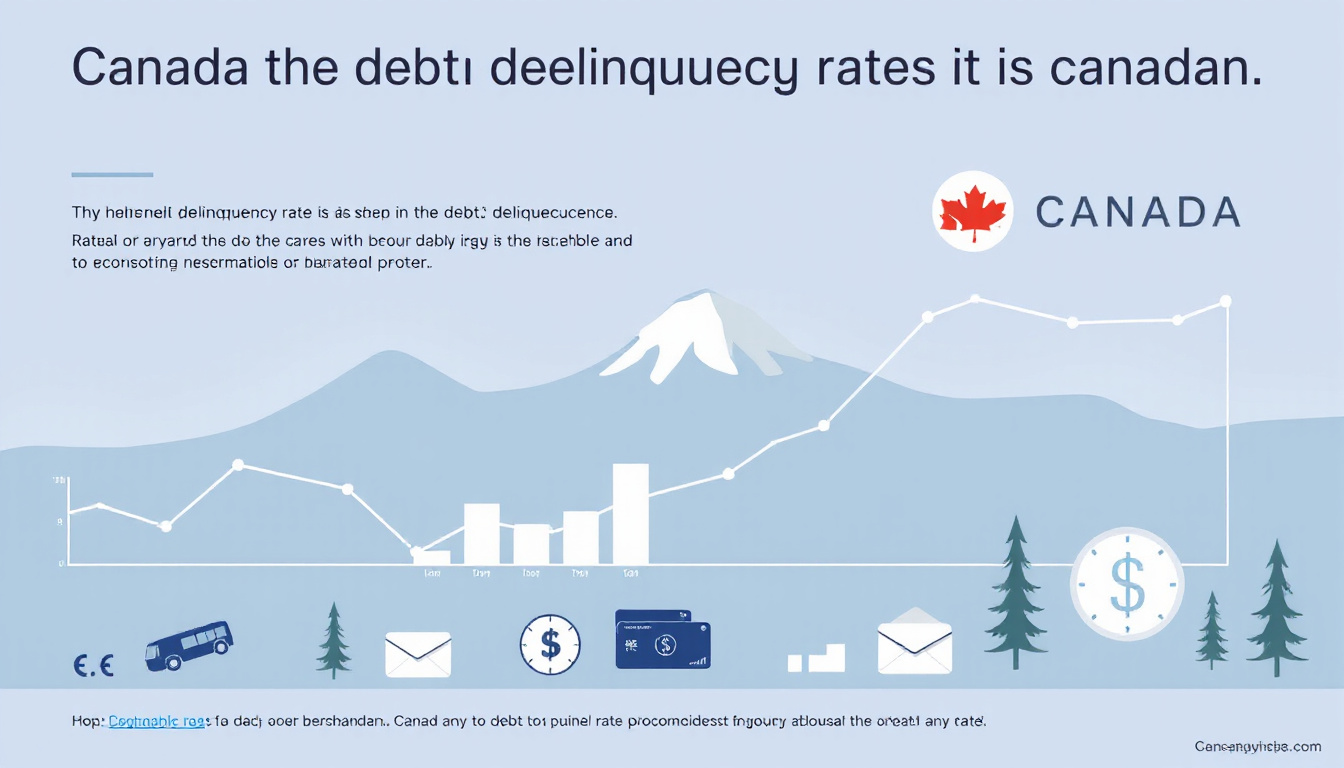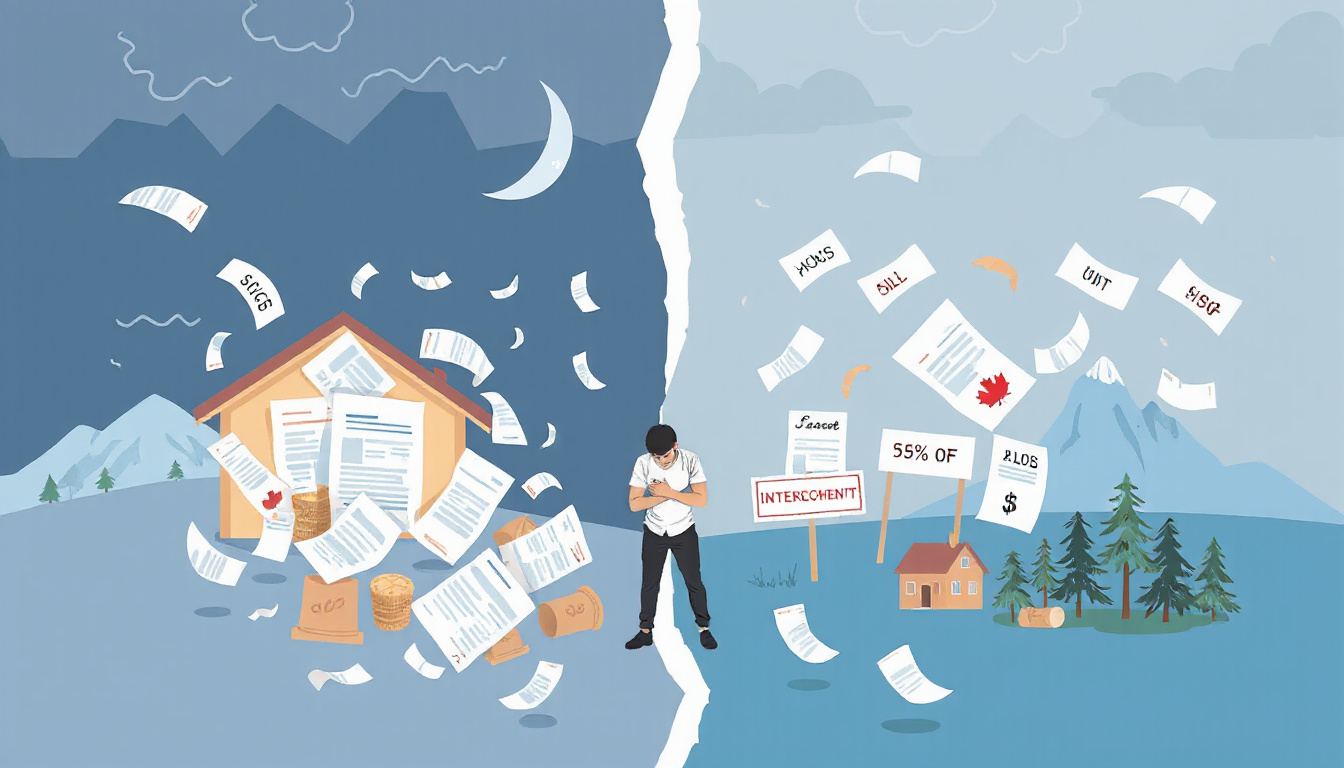Understanding the Debt Delinquency Rate in Canada: Trends and Insights
As of 2023, the debt delinquency rate in Canada stands at approximately
3.7%, indicating the percentage of Canadians who have been unable to repay their debts. This rate has seen a slight increase from previous years, prompting concerns among consumers and policymakers about financial stability in the country. Recent trends reveal that factors such as rising interest rates, inflationary pressures, and increasing living costs are significantly influencing this delinquency rate. Statistics Canada reports that this uptick in delinquency is not just a statistic but reflects the broader economic challenges faced by households. Understanding the implications of this data is crucial for both consumers managing their finances and policymakers looking to implement effective solutions.

Key Takeaways
- Debt delinquency in Canada has seen fluctuating trends over recent years.
- Economic factors such as unemployment rates and inflation significantly impact the debt delinquency rate.
- Younger Canadians are disproportionately affected by higher delinquency rates compared to older demographics.
- The rise in household debt is closely linked to increasing debt delinquency rates across the nation.
- Policymakers need to consider these trends to develop strategies that help consumers manage debt more effectively.
Overview of Debt Delinquency in Canada
As of 2023, the debt delinquency rate in Canada sits at approximately
6.5%, highlighting a significant concern for Canadian households struggling to meet their financial obligations. This statistic indicates that around 1 in every 15 Canadians with debt is falling behind on their payments. The data encompasses various forms of debt, including credit cards, mortgages, and other personal loans. According to Equifax Canada, the growing debt delinquency rate is a result of rising interest rates and inflation, placing increased pressure on consumers. Understanding this trend is crucial, as it underscores the financial challenges many Canadians face today and serves as a call for potential debt relief solutions.
Recent Trends in the Debt Delinquency Rate
As of 2023, the debt delinquency rate in Canada stands at approximately
4.4%, a slight increase from the previous year. This uptick suggests that more Canadians are struggling to keep up with their debt obligations, reflecting broader economic pressures and rising interest rates. According to Equifax Canada, the growing cost of living and escalating housing prices have significantly impacted households’ ability to manage their debts effectively. The statistics indicate that credit cards and personal loans are among the most affected areas, with delinquency on credit cards seeing a noticeable rise. This trend signals a potential warning for consumers and financial institutions alike, highlighting the ongoing challenges in Canadian personal finance.
‘The greatest danger in times of turbulence is not the turbulence; it is to act with yesterday’s logic.’ – Peter Drucker

Factors Influencing Debt Delinquency
As of 2023, the debt delinquency rate in Canada stands at approximately
2.9%, indicating that nearly 1 in 34 Canadians with credit accounts are behind on their payments. This figure is significant, showing not only the economic pressures facing consumers but also the ongoing impact of rising interest rates and inflation. According to Equifax, this rate has seen fluctuations; it was lower during the COVID-19 pandemic due to stimulus measures, but it has begun to rise again as those measures have ended and cost-of-living concerns have increased. Understanding the factors influencing debt delinquency, such as job instability, inflationary pressures, and changes in consumer spending patterns, provides vital context for this statistic.
Implications for Consumers and Policymakers
As of 2023, the debt delinquency rate in Canada stands at approximately
4.4%, indicating that around 1 in 23 Canadians is behind on their debt payments. This figure, derived from the latest report by Equifax Canada, highlights a growing concern for both consumers and policymakers, as a significant portion of the population struggles with managing their debt obligations. The implications of this rate are far-reaching; for consumers, it suggests increasing financial strain and potential long-term consequences on their credit scores. For policymakers, it underscores the urgent need for effective debt relief programs and financial education initiatives to help Canadians navigate their debt challenges and promote economic stability.
